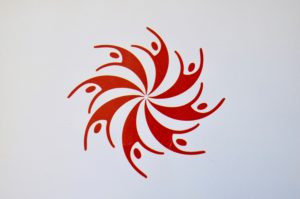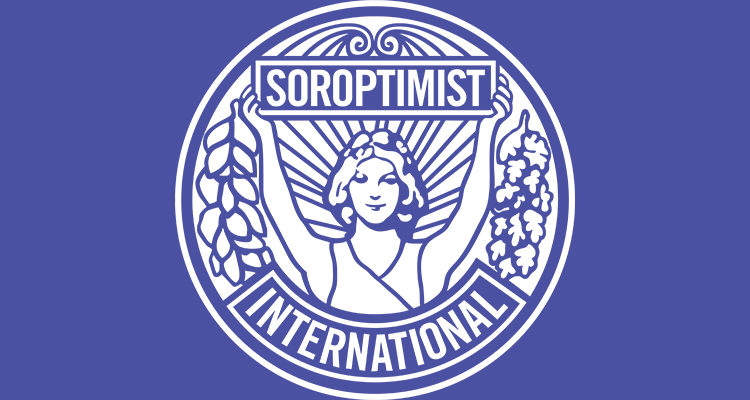As part of Soroptimist International’s (SI’s) series of blogs discussing the Beijing Declaration and Platform for Action (BPfA), SI United Nations (UN) Representative, Jacqueline Shapiro, examines the topic of the girl child, recalling the work by activists to insure the girl child was included in the BPfA, and that ensuring that the Girls are recognised annually on 11 October.
Jacqueline highlights the issue of trafficking a problem that has increased during COVID-19.
 In 1995 the United Nations held a fourth world conference on women in Beijing, China. 1,700 participants and 30,000 civil society activists attended the two-week conference, although Non Governmental Organisations (NGO) events were located away from the main conference. The outcome document, unanimously adopted by 189 member states, is the Beijing Declaration and Platform for Action, which even today is the blueprint for advancing gender equality and the empowerment of women and girls. It contains the Twelve Critical Areas of Concern identified as priorities to achieve the rights of women and girls as well as specific actions to be taken by governments, UN agencies, civil society, the private sector and others to fulfil the identified strategic objectives.
In 1995 the United Nations held a fourth world conference on women in Beijing, China. 1,700 participants and 30,000 civil society activists attended the two-week conference, although Non Governmental Organisations (NGO) events were located away from the main conference. The outcome document, unanimously adopted by 189 member states, is the Beijing Declaration and Platform for Action, which even today is the blueprint for advancing gender equality and the empowerment of women and girls. It contains the Twelve Critical Areas of Concern identified as priorities to achieve the rights of women and girls as well as specific actions to be taken by governments, UN agencies, civil society, the private sector and others to fulfil the identified strategic objectives.
It had long been a concern of those working in children’s rights, that there were unique challenges in the lives and well-being of girls that needed to be addressed separately from boys or from women. In the lead up to the Fourth World Conference, UNICEF invited the formation of a group of NGOs to focus on girls. Soroptimist International United Nations representatives Carol Themm and Kathy Mayer were early members of this team.
In Beijing, UNICEF as the lead UN agency, the Working Group on Girls (WGG) and NGOs from around the world, most notably from Africa, successfully lobbied delegates for the inclusion in the Platform for Action of Section L – the Girl Child. The Platform for Action identifies eight strategic objectives with actions to be taken on the “persistent discrimination against and violation of the rights of the girl child.”
The inclusion of Section ‘L’, the Girl Child, as one of the twelve critical areas of concern was an important recognition that there are impediments and challenges in the lives of girls that must be addressed differently from women or boys. Section ‘L’- Persistent discrimination against and violation of the rights of the girl child- puts forth eight strategic objectives with a series of concrete actions needed to be taken by governments, the UN, and civil society to eliminate obstacles to the full enjoyment of their human rights of women and girls.
In the ensuing twenty-five years, there have been many advances in empowering the lives of girls, especially in expanding education and better health, but violence against girls has changed little or gotten worse. Gender equality in homes, schools, communities and beyond does not exist in much of the world where a girl’s value is in her labor, her dowry or the price she will bring for sexual exploitation.
Strategic objective -Eradicate violence against the girl-child-L.7(d) stresses the enactment and enforcement of legislation protecting girls from sexual abuse, sexual exploitation, child prostitution and child pornography.
Increased Trafficking of Girls is a Grave Concern
According to statistics from the ILO (2017), there are nearly five million victims of forced sexual exploitation and women and girls comprise 99% of that number. There are an additional four million victims of other forms of forced labor, women and girls make up 58% of them. In the United Nations Office of Drugs and Crime (UNODC) 2016 Global Report on Trafficking, data collected from 142 member states show that girls make up 23% of all trafficking victims. Of that number, seventy-two percent are victims of sexual exploitation, twenty-one percent of forced labor and seven percent other.
Human trafficking is one of the most profitable illicit crimes worldwide with an annual reported $150 billion business These statistics are widely considered underestimates. DoSomething.org suggests that only about .04% of survivors of human trafficking are identified.
The COVID pandemic has exacerbated many of the issues that put girls in jeopardy for being trafficked-poverty, migration, armed conflict, domestic work, and online exploitation. At the same time, the UN and national governments have had to divert their often limited resources away from initiatives to identify, prevent and protect against human trafficking and toward the health crisis instead.
United Nations Secretary General António Guterres urged governments to put women and girls – their rights, inclusion, representation and protection – in the forefront of their actions to tackle and recover from the COVID pandemic. He stated that the pandemic has already reversed decades of limited and fragile progress on gender equality and women’s rights and we must prevent “years, even generations, of progress from being lost.”
Human trafficking is a result of the failure of our societies and economies to protect the most vulnerable and enforce rights under national laws (UNODC). In these precarious times, it is up to us to ensure that girls have equal opportunity and agency to lead our planet to a better future.
The Day of the Girl Child
 From this celebrated beginning, the Working Group on Girls (WGG) went on several years later to bring girls themselves into the halls of the United Nations to tell their own stories. I was there, along with representatives of many member states, and I can tell you there was not a dry eye in the house. Soon after the WGG began bringing girls and encouraging member states to include girls in their delegations to the annual CSW meetings.
From this celebrated beginning, the Working Group on Girls (WGG) went on several years later to bring girls themselves into the halls of the United Nations to tell their own stories. I was there, along with representatives of many member states, and I can tell you there was not a dry eye in the house. Soon after the WGG began bringing girls and encouraging member states to include girls in their delegations to the annual CSW meetings.
The WGG was part of the vigorous advocacy that led to the UN General Assembly in 2011 to declare October 11th as the International Day of the Girl. Since the first IDG in 2012, the WGG has organised an annual Girls Speak Out where girls from all over the world provide intelligent, impassioned stories about their lives and issues that affect all of us and how we can work together to build a better future.
We often rightly despair of the deplorable situations of women and girls around the world and the enormous gaps that remain in achieving gender equality, but, every so often it is heartening
to acknowledge our shared accomplishments.
The 2020 Girls Speak Out will take place on Friday, 9 October 2020. To find out more visit:

